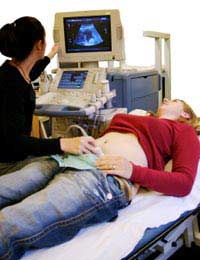What are Prolapses?

The word prolapse means that something is not where it should be. In women’s health this can refer to the uterus, bladder, anus or even the bowel.
They are more commonly seen in post-menopausal women as the tissues, muscles and ligaments become less supportive and lose elasticity; this is more often seen in women who have had normal vaginal deliveries. It is possible to find a prolapse in a younger person for a variety of reasons but it is not common.
Prolapse Of The Uterus
The uterus is help in place in the pelvis with the help of different ligaments and muscles. For some women these supporting structures can become weakened and the uterus can begin to fall into the vagina. There are different degrees of uterine prolapse ranging from a small descension into the vagina to a condition called procidentia when the uterus protrudes to a marked degree out of the vagina.Prolapse Of The Bladder
A bladder prolapse known medically as a cystocoele, occurs when the bladder slips into the vagina. This can appear as a bulge in the front wall of the vaginal passage and is the most frequently diagnosed type of prolapse in women. A bladder prolapse can also include a prolapse of the urethra which is the small tube connecting the bladder with the outside world.Prolapse Of The Anus/Rectum
Known as a rectocoele, this occurs as the very lower part of the bowel and rectum protrude into the vaginal. This is often felt as a bulging in the back wall of the vagina. It shouldn’t be confused with a rectal prolapse when the bowel can drops out of the anus.Prolapse Of The Vagina
After a woman has undergone a hysterectomy in which the cervix is removed, the top of the vagina known as the vaginal vault has less support to stay in place. Sometimes the top of the vagina can drop down directly into the vagina canal.General Causes Of A Prolapse
The most usual cause for a prolapse is being post-menopausal and having had normal birth in the past.In addition to this those who are obese or who smoke are also at risk.Some women may find their prolapse worsened by the presence of fibroids on the uterus. The size and position of the fibroid is very important in the likelihood of this being the cause.Prolonged bouts of coughing can also cause the muscles in the pelvis to weaken but this is not so likely to cause severe prolapses.Those who do a lot of manual work or perform an awkward lift or lift something that is particularly heavy might also find themselves at risk.Treating Prolapses
There are many ways to treat prolapses and the nature of the treatment will depend heavily on the organs affected and the severity of the displacement.Treatments can be surgical, though it is likely that non-surgical options will be explored first as they are less invasive; this is unless the damage is severe and will not be helped by non-invasive treatments.Prolpases occur when one or more of the pelvic organs drop out of place. They are fairly common in woman who have carried a child and given birth to it vaginally. The chances are further increased by being overweight or post-menopausal.They can be treated, though the plan of care will vary from person to person.


Re: Tummy Tucks Explained
I have been living with my stretch mark scars from pregnancy for 7-8 years, I had my first adorable son when I was 16. I believe that’s why…
Re: What is Squamous Metaplasia?
Sir/ Madam Rcently i went for Anti Mullenrian Hormone Test and the report says metaplastic squamous cells seen . what is this…
Re: Benefits Of Evening Primrose Oil
Please I have been trying to conceive for a while, but to no avail I was told to work on my hormonal imbalance, that is why I…
Re: All About Varicose Veins
What a great article! I can tell you really care about what you are writing about, which is a rare thing these days. Thank you for…
Re: What is Squamous Metaplasia?
Happy - Your Question:My smear show squamous metaplasia and reactive cellular change with inflammation.what it means??
Re: What is Squamous Metaplasia?
My smear show squamous metaplasia and reactive cellular change with inflammation....what it means??
Re: What is Squamous Metaplasia?
Genie - Your Question:I undergone D&c last Jan. 6 and my histopath result was Chronic Cervicitis with squamous metaplasia. I had…
Re: What is Squamous Metaplasia?
I undergone D&c last Jan. 6 and my histopath result was Chronic Cervicitis with squamous metaplasia. I had on and off very light…
Re: What is Squamous Metaplasia?
My biopsy report says squamous metaplasia...what is the meaning?
Re: What is Squamous Metaplasia?
I just recently had my biopsy result from a liquid-based pap smear test & the result is: acute & chronic cervicitis with squamous…